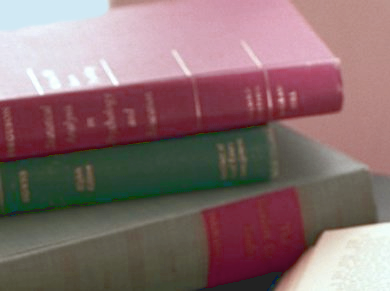Krister Holmberg reviews the book The Scientist and the Forger: Probing a Turbulent Art World by Jehane Ragai
In 2015, Jehane Ragai, Professor Emerita at the American University in Cairo, Egypt, published the book, The Scientist and the Forger, which was very well received and attracted attention from the art community, as well as from the general public interested in the topic. A second edition of The Scientist and the Forger has now been published. In fact, the new book is much more than an updated version of the first edition.
While the first edition had a focus on the analytical techniques used for detecting forgeries, the new edition puts more attention on the authentication process as such, involving not only scientific evidence but also art connoisseurs’ views and the provenance of the painting. In fact, with the analytical techniques now available, most “simple” forgeries can immediately be revealed, usually through detection of anachronistic pigments, as Ragai discusses in some detail in connection to a famous Jackson Pollock case.
Vermeer’s Saint Praxedis
A powerful tool of relatively recent origin is lead isotope ratio determination. This method is based on the fact that the metal lead, and consequently also the white pigment lead white made from it, consists of a number of isotopes and that the ratio between the isotopes varies depending on the origin. This means that the lead white used by an Italian painter in the 16th century has a different isotope ratio than that used by a Flemish painter from the same period.
This technique was used to prove that the painting Saint Praxedis had been painted by Vermeer and not by a Florentine artist, as had been claimed when the painting had been on display at the Metropolitan Museum of Art, New York, USA, in 1969.
Leonardo’s
Mona Lisa
Sometimes, however, science alone cannot give a decisive answer. A well-known example is Leonardo’s Mona Lisa. There exist at least three very similar paintings, the ones in the Louvre, Paris, France, and the Prado, Madrid, Spain, museums, as well as the so-called Isleworth Mona Lisa, which is owned by a consortium and deposited in the vault of a Swiss bank.
Careful analysis of the pigments and binders of the paintings did not reveal any anachronistic elements. All three artworks seem to be from the same time and all could well have been painted by Leonardo. Science alone could not tell that any of them is a fake and the answer to the question which is the real Leonardo Mona Lisa must be based on the opinion of experts on Leonardo. Such a judgment is based on details such as brushwork and coloring scheme, but also on very subjective views related to the “soul” of the painting. There now seems to be a consensus with respect to the Louvre and the Prado paintings that the Louvre version is by Leonardo’s hands, whereas the one in the Prado museum is a copy painted in tandem with the one now in the Louvre. Everyone realizes how difficult such judgments must be.
Caravaggio’s The Cardsharp
There are examples of so-called autograph replicas, which are copies painted by the artist himself. Is such a copy less valuable than the original? Ragai gives a fascinating example of this.
There is a famous painting by Caravaggio from 1595 called The Cardsharps, which is in the Kimbell Art Museum in Texas, USA. Recently, a painting very similar to the Kimbell Cardsharps appeared on the market. Sotheby’s had stated at an auction in 2006 that it was a 17th-century copy of the original artwork. One year later, it was claimed by a leading Caravaggio expert that the painting was, in fact, an autograph replica. The person who sold the painting in the belief that it was a copy subsequently sued Sotheby’s.
Gauguin’s Vase de Fleurs (Lilas)
A solid provenance is a very strong piece of evidence that the painting is not a fraud. However, certificates with provenances can also be forgeries or real certificates may be used to create forgeries. In her book, Ragai gives fascinating accounts of how imaginative such transactions can be.
An example is the American art dealer who bought authentic paintings of modern art masters such as Gaugin and Chagall, which came with legitimate letters of authenticity. He then hired artists to make copies of the paintings and the copies were sold with the original authenticity letter attached. Next, he brought the original painting to a renowned expert and asked for a letter of authenticity. Then he had a new copy of that painting made, etc. The forgery was revealed in 2000 when in Christie’s and Sotheby’s Spring catalogs two identical Gauguin paintings appeared.
Art forgery is an industry that is growing in size with the increasing value of fine art. Jehane Ragai’s new book is highly recommended for those who want an insight into this obscure but fascinating field.
 |
The Scientist and the Forger: Probing a Turbulent Art World, |
Krister Holmberg is the former President of the Royal Society of Arts and Sciences in Gothenburg, Sweden, Member of the Royal Swedish Academy of Sciences, and of the Royal Swedish Academy of Engineering Sciences.
Also of Interest
- Review of the Second Edition of The Scientist and the Forger A Book by Jehane Ragai,
Bengt Norden (Professor; Chemistry and Chemical Engineering, Physical Chemistry; Member of the Royal Swedish Academy of Sciences)
Art & Museum Magazine 2018, pages 49–49.
Link




